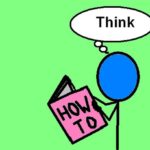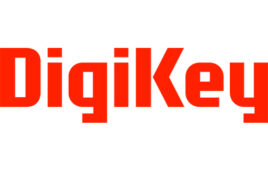Teschler on Topic
Leland Teschler • Executive Editor
[email protected]
On Twitter @ DW_LeeTeschler
Clean energy is in the news thanks to a Federal budget proposal that would boost spending on clean-energy infrastructure by 27% as well as create both a federal standard and tax credits for clean electricity. To many people, clean energy is a term denoting wind and solar power. And the U.S. Dept. of Energy already has long-term goals for the amount of power generated by wind and solar in the U.S. So it is interesting to see what kind of infrastructure these goals imply.
The DoE figures the U.S. will need 5,500 billion kWh of power in 2050 and hopes that 42% of that, or 2,300 billion kWh, will be generated by solar power. To get a handle on the implications of that figure, consider that the largest solar power plant in the world today is the Bhadla Solar Park in India. It has an installed capacity of 2.25 GW and spans 14,000 acres, about the size of Newark, N.J.
will be generated by solar power. To get a handle on the implications of that figure, consider that the largest solar power plant in the world today is the Bhadla Solar Park in India. It has an installed capacity of 2.25 GW and spans 14,000 acres, about the size of Newark, N.J.
Sufficiently curious individuals can calculate how many Bhadla parks it would take to reach the DoE solar generation goal for 2050. To simplify things, we might assume that all solar panels are illuminated with full sunlight for five hours daily, there are never any cloudy days, panels never go down for service, and panels don’t grow old or dirty so their output never drops.
These conjectures let us estimate that Bhadla park is good for about 4 billion kWh annually. Thus we’d need 575 Bhadla parks to hit DoE’s 2050 solar generation goal, covering a land area larger than the state of Maryland.
A similar exercise for wind leads us to examine the Alta Wind Energy Center, also known as the Mojave Wind Farm, in California. Said to be either the second or third-largest onshore wind energy project in the world, it has a 1,550 MW capacity and occupies 3,200 acres. It’s capacity factor over the past few years was 23.5%.
That means Alta has provided about 3.19 billion kWh annually. The DoE hopes that 35% of our power, or 1,900 billion kWh, will come from wind by 2050. It would take 596 Alta sites to hit this goal, occupying land equivalent to about half the state of Connecticut.
You might quibble with the rationale for these conclusions. After all, off-shore wind power doesn’t use any on-shore land. But these projects are technically challenging and are experiencing the same NIMBY problems in the U.S. that have slowed ordinary wind plant construction. And a lot of solar panels will go on rooftops rather than in solar farms. Additionally, commercialization of more-efficient perovskite solar cells could boost solar farm energy density. Nevertheless, even optimized versions of wind and solar installations would take up a significant amount of real estate.
With that in mind, it is easy to see the attraction of a next-generation nuclear power plant planned for Wyoming. Called Natrium, it is a joint initiative between Bill Gates’s TerraPower and PacifiCorp, owned by Warren Buffett’s Berkshire Hathaway. It consists of a 345-MW sodium-cooled fast reactor and molten salt-based energy storage. The nuclear industry has an overall capacity factor of 85.9%. If the Natrium plant has the same reliability, it would generate 2.6 billion kWh annually.
Thus 886 of these relatively small reactors would handle the DoE power goal for solar in 2050. If they occupy the average 1.3 square-miles of an ordinary nuclear plant, they would all fit comfortably inside the city limits of Anchorage, Alaska. DW
You may also like:
Filed Under: NEWS • PROFILES • EDITORIALS, Commentaries • insights • Technical thinking








